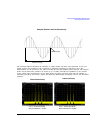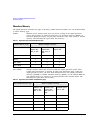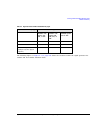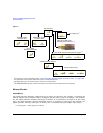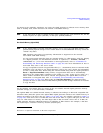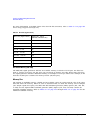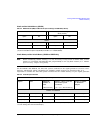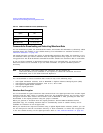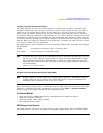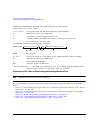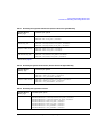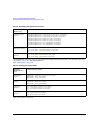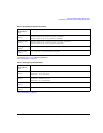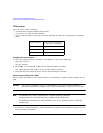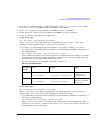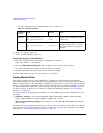
Agilent N518xA, E8663B, E44x8C, and E82x7D Signal Generators Programming Guide 205
Creating and Downloading Waveform Files
Commands for Downloading and Extracting Waveform Data
Encrypted I/Q Files and the Securewave Directory
The signal generator uses the securewave directory to perform file encryption (extraction) and
decryption (downloads). The securewave directory is not an actual storage directory, but rather a
portal for the encryption and decryption process. While the securewave directory contains file
names, these are actually pointers to the true files located in signal generator memory (volatile or
non-volatile). When you download an encrypted file, the securewave directory decrypts the file and
unpackages the contents into its file header, I/Q data, and marker data. When you extract a file, the
securewave directory packages the file header, I/Q data, and marker data and encrypts the waveform
data file. When you extract the waveform file (I/Q data file), it includes the other two files, so there
is no need to extract each one individually.
The signal generator uses the following securewave directory paths for file extractions and encrypted
file downloads:
Volatile /user/bbg1/securewave/file_name or swfm:file_name
Non-volatile /user/securewave or snvwfm1:file_name
NOTE To extract files (other than user-created I/Q files) and to download encrypted files, you must
use the securewave directory. If you attempt to extract previously downloaded encrypted
files (including Signal Studio downloaded files or internally created signal generator files
(ESG/PSG only)) without using the securewave directory, the signal generator generates an
error and displays:
ERROR: 221, Access Denied.
Encrypted I/Q Files and the Securewave Directory (Agilent MXG)
NOTE Header parameters of files stored on the Agilent MXG’s internal or USB media cannot be
changed unless the file is copied to the volatile BBG memory. For more information on
modifying header parameters, refer to the User’s Guide.
When downloading encrypted files (.SECUREWAVE) from the USB media that have had the file suffix
changed to something other than .SECUREWAVE, you must use the Use As or Copy File to Instrument
menus to play an encrypted waveform file in the signal generator.
File Transfer Methods
• SCPI using VXI-11 (VMEbus Extensions for Instrumentation as defined in VXI-11)
• SCPI over the GPIB or RS 232
• SCPI with sockets LAN (using port 5025)
• File Transfer Protocol (FTP)
SCPI Command Line Structure
The signal generator expects to see waveform data as block data (binary files). The IEEE standard
488.2-1992 section 7.7.6 defines block data. The following example shows how to structure a SCPI



